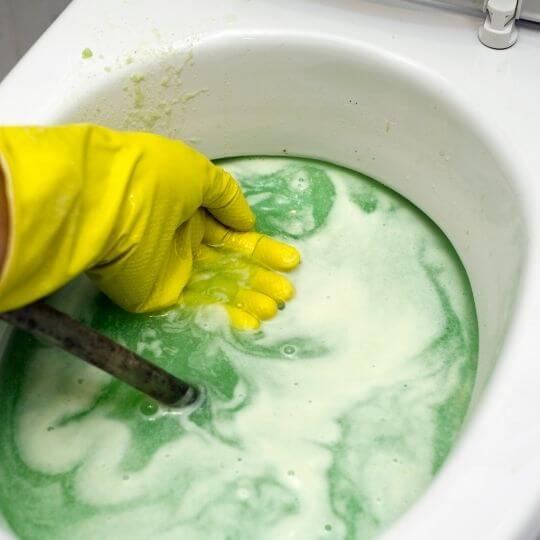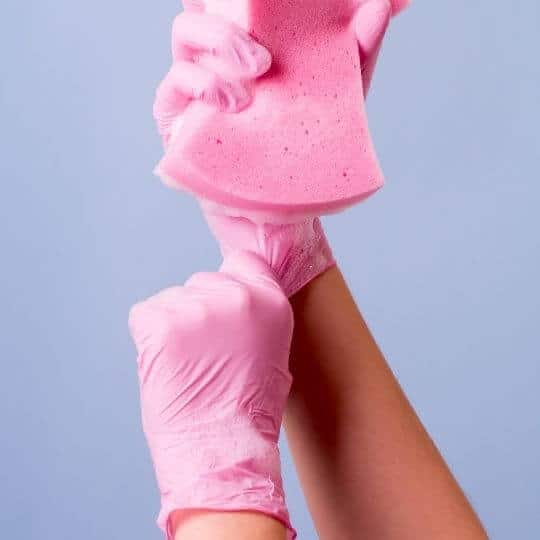Kleenex is one of the most popular hygiene products in the United States. According to statistics, more than 170 million Americans used this brand of tissues in 2020. The downside of using disposable cleaning tissues is well… disposing of them. But can you flush Kleenex at all?
The truth is we have all done this at least once, even if we don’t admit it.
If you want to find out what happens if you flush Kleenex down the toilet, keep on reading!
What is Kleenex?

Before finding out – can you flush Kleenex – let’s find out some interesting things about this popular brand.
Kleenex is a registered trademark of Kimberly-Clark. The latter is a FSC certified company, ensuring responsible forestry to manufacture its products.
Kleenex products are manufactured in over 30 countries and are sold in more than 170 countries.
Other brand names for Kleenex are Huggies, VIVA, and Cottonelle.
Kleenex production began during the First World War with paper used as a filter for gas masks.
In the 1920’s, Kleenex established the Kotex trademark for menstrual products.
The name Kleenex was created in 1924 for a cold cream remover product or facial tissue.
The name Kleenex is so popular in the United States that is has been genericized. Nowadays, any facial tissue is called a Kleenex, regardless of the brand.
What can happen if you flush Kleenex down the toilet?
Before answering to ‘Can you flush Kleenex?’, we need to find out what the product is made of. According to the producer’s website, Kleenex is made with biodegradable cellulose fibers.
However, the cellulose fibers are added an additive to make them stronger. This means that Kleenex will not break down as rapidly as bathroom tissue. Even the producer advises discarding Kleenex in the trash.
But we all know that people are tempted to take the easy way even if this means breaking a rule.
It’s not uncommon for people to flush a Kleenex every once in a while. Or all the time.
So, what can happen if you accidentally flushed Kleenex? What would be the consequences? After all, they’re much like toilet paper.
Actually, they are not. Facial tissue and paper towels have a different design from toilet paper. If toilet paper is designed to break up easily when flushed, facial tissue and paper towels do not disintegrate immediately.
As a result, they can end up clogging pipes or the sewer system. When a serious blockage occurs, sewage can even back up to your home!
Kleenex’s official position
Kleenex warns about their customer about the risks of flushing facial tissues. However, the famous Kimberly-Clark brand has also launched a line of flushable wipes.
Kleenex advises customers to read instructions on the product package. Wipes that are flushable are indicated as such on the package. Even so, Kleenex suggests taking some precautions:
- Using Kleenex Flushable Wipes only in properly maintained sewerage systems and commercial septic systems.
- Flushing a maximum of 2 wipes at a time.
Kleenex claims that it is possible to flush specially designed wipes because they comply with EDANA flushability guidelines. These guidelines require that wipes:
- Clear and not block in the toilet bowl and drain line;
- Disintegrate when agitated;
- Pass through household pumps;
- Settle in sewerage systems;
- Break down in aerobic conditions;
- Break down in anaerobic conditions;
- Flow through municipal sewer pumps without pump overload.
Curious how to dissolve Kleenex? Just place it in a recipient filled with water and see what happens. Agitating the wipe can accelerate the break down process.
So, can you flush Kleenex down the toilet?

The answer to this question depends on the type of Kleenex you are using.
If it’s the average Kleenex, the answer is no.
What can happen?
Facial tissues and paper towels can become stuck in the toilet trap or the drain pipe. When this type of blockage occurs, water does not drain anymore when you flush. Your toilet is no longer functional, which is a huge problem.
Even if those wipes manage to get past your drain pipe, they reach the public sewer system. This is where they will cause a lot of trouble.
Wipes clog homeowner sewer pipes but also municipal sewer pipes. Together with other items that should not be flushed, they put stress on community wastewater collection and treatment equipment.
Cities have to spend thousands on equipment repair and replacement. Workers also have to manually clean pumps and pipes whenever a ball of wipes and debris forms. That’s a bad day at the job for sure!
In the end, all this situation reflects in the increased wastewater fees from your city. Somebody has to pay for cleaning all the mess, and this is obviously the consumer or tax payer.
Instead of repairing malfunctions that would not have happened, wastewater facilities could spend their money in a better way. They could develop systems to improve water quality, so putting wipes in the trash is very important.
But there is also the situation when you use flushable wipes. According to the producer, flushable wipes are safe for sewer systems.
However, there are some variables in the equation – the condition of the drain and the amount of wipes you flush.
So, you can never be 100% sure you can flush a flushable Kleenex. Moreover, when the tissue is produced by a low-standard brand, you may not be able to trust the manufacturer.
Also think that you get used to flushable wipes and you accidentally flush an average Kleenex. Some of those tissues end up in the sewer system by mistake.
What if you accidentally flush Kleenex?

Some of us have accidentally flushed Kleenex down the toilet and wondered what could happen.
Flushing a Kleenex by mistake is not a catastrophe, but best is to retrieve it. There is always a chance that one innocent wipe could start a clog somewhere.
Take the following steps to retrieve the Kleenex:
- Put on elbow-length rubber gloves;
- If the wipe is still visible, grab it and pull it out;
- Turn off the water supply to the toilet;
- Reach into the toilet trap and try to locate the wipe;
- Try using a bent hanger to hook onto the wipe;
- Try a plunger to create suction and move the wipe back into the toilet trap;
- Use a drain snake if the Kleenex is too far down the toilet drain;
- Consider using a wet vacuum if possible;
- Remove the toilet to retrieve the wipe if you are worried about its negative effects. This is also worth doing if you accidentally flushed a valuable item.
What other items you must not flush down the toilet?
Kleenex and other facial tissues are not the only items you should not flush.
The rule of thumb is that only pee, poo, and toilet paper can go down the drain.
Even so, lots of people have a bad habit of flushing anything down the toilet, such as:
- Grease, oil, and fat
- Sanitary napkins
- Diapers
- Cat litter
- Dental floss
- Hair
- Q-tips
- Food
- Medicine
- Rags and other bulky items
Anything that does not dissolve into water fast should not be flushed down the toilet. All the items above represent a problem.
Grease solidifies in cold water and creates the so-called fatbergs that collect debris and get bigger and bigger.
Diapers, sanitary towels, and cat litter contain super-absorbent materials. These increase in size multiple times when soaked in water.
Dental floss and hair can adhere to burrs in the drain pipe and start a clog as well.
Q-tips and rags will block pipes and even require the intervention of a plumber.
Medicine and other chemicals contaminate the water supply. This is because wastewater stations cannot remove them through common treatment procedures. As a result, tap water and water sources can contain all kinds of chemicals. Some of these chemicals are disrupting the hormonal systems of animals and humans.
Can You Flush Kleenex? The answer is no.
You may be tempted to discard of flushable Kleenex in the toilet, but best is not to. Most people already have a trash bin in the bathroom for various items. Throwing all the Kleenex and similar products in that bin is the best solution.

Michael Davis is a heating & plumbing expert who currently works as independent contractor in SC. He also writes for Plumbertip.
For almost 10 years he worked on various plumbing tasks across South Carolina.


